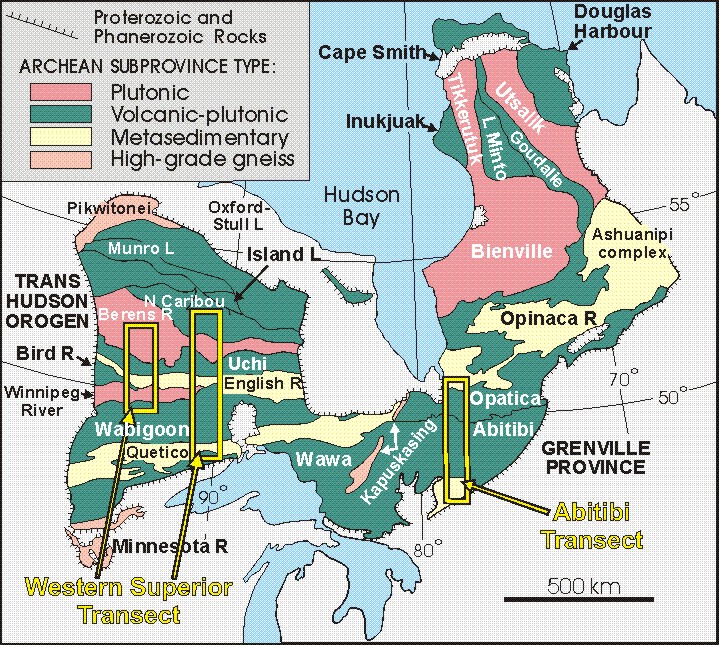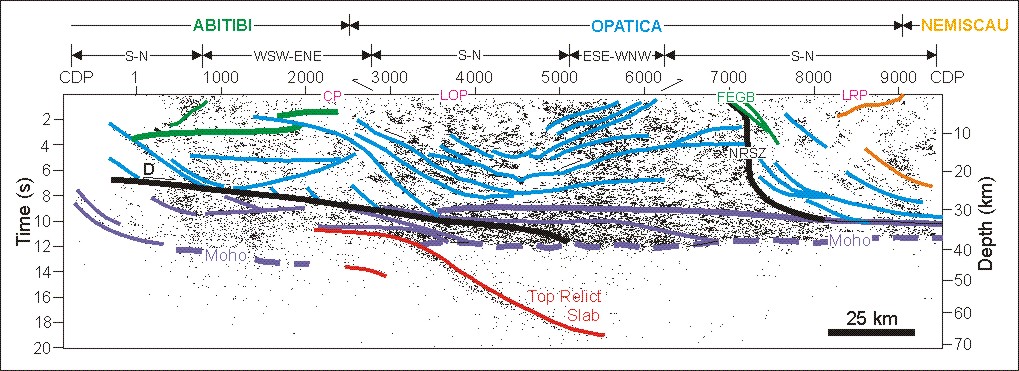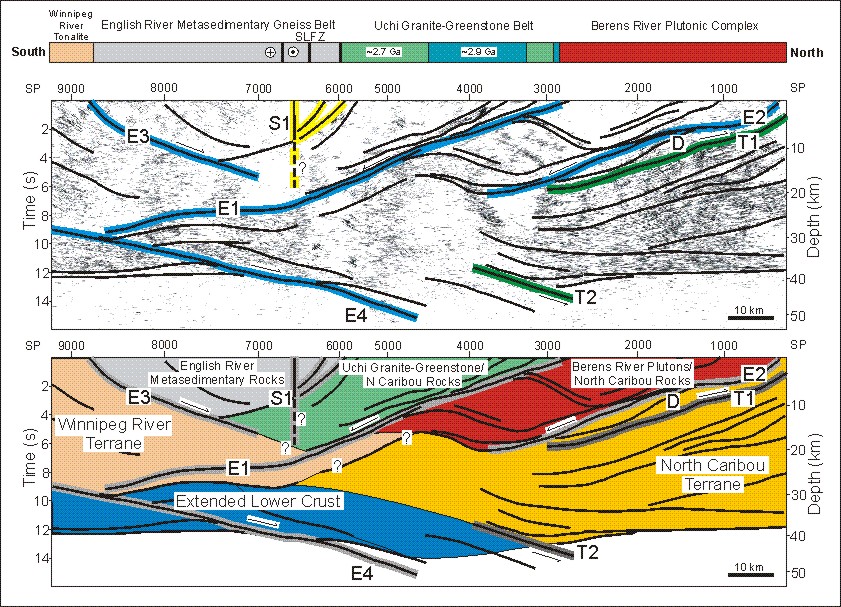
As part of the Canadian LITHOPROBE project, several seismic surveys have been acquired over the Archean Superior craton, which forms much of Ontario and Quebec. Of these the Abitibi-Grenville transect (1988-1993) and the Western Superior transect (1996-2000) provided the most dramatic regional-scale images.

Seismic reflection data were acquired across the Abitibi greenstone belt, Earth's largest greesntone belt, and the two adjacent geological belts, the Pontiac metasedimentary belt and the Opatica plutonic belt. These reflection images have been combined into a regional scale profile, which has been accepted as one of the Classic Transects of the International Geological Correlation Project 474. These seismic data, and in particular a north-dipping mantle reflection observed on line 48 across the Opatica belt, provide strong support to the idea that plate tectonic subduction operated in the Late Archean approximately 2.7 Ga ago. Furthermore, the existence of shallowly north-dipping reflections beneath the Abitibi greenstone belt, which date from the time of terrane accretion, imply that convective overturn of the newly assembled crust did not occur.

Most of the seismic data shot across the Superior Province appear to show the preserved, but presumably somewhat modified, structures associated with the original southward growth of the Superior Province by terrane accretion. There is little evidence in the seismic data of extension that would suggest a major reworking of the newly assembled crust, despite inferences from surface geological mapping in the Kapuskasing uplift of widespread lower crustal flow. The Red Lake transect, which extends from the Winnipeg River plutonic gneiss domain, across the Uchi granite-greenstone belt, and into the Berens River plutonic complex of the North Caribou terrane, differs from other lines by showing evidence of crustal-sclae extension along a SE-dipping crustal shear zone (E1). Normal motion on this shear zone is inferred from the deflection of reflectors in the footwall. The eastern Western Superior transect shows that the Uchi greenston belt is the location of a suture zone similar to that of the Opatica belt; although there are no visible mantle reflections, doubly-vergent crustal reflections and offsets in the Moho suggest successive crustal shortening and terrane accretion driven by successive backstepping of a subduction zone. But this picture is modified by extension in the west beneath the Red Lake region of the Uchi belt. Reflections beneath T1 are correlative to the northern flank of the doubly-vergent crustal structures, but the crust to the south has been modified by extension. Reflectors associated with E1 have been estimated to dip to the SE, although the actual slip direction is not known.
